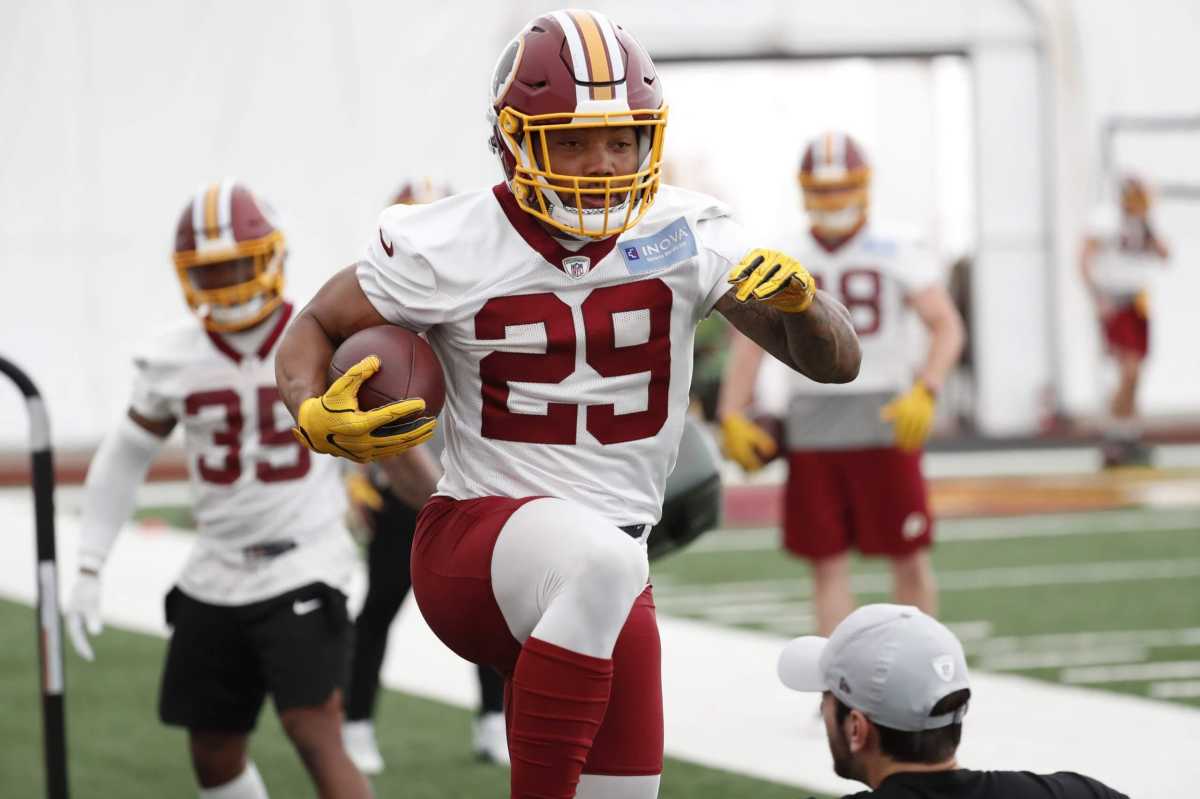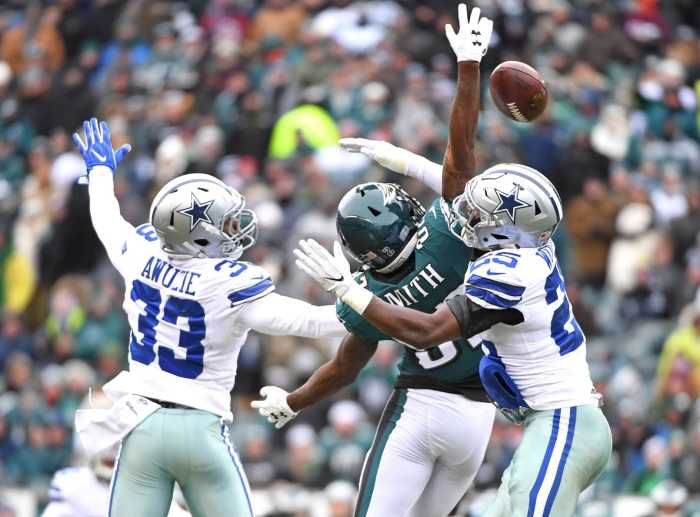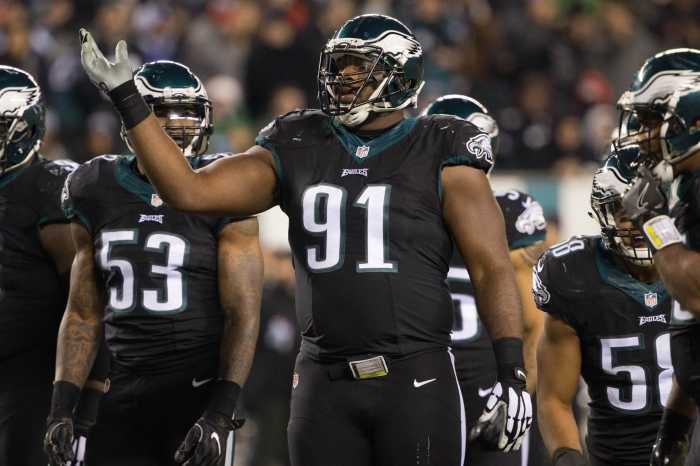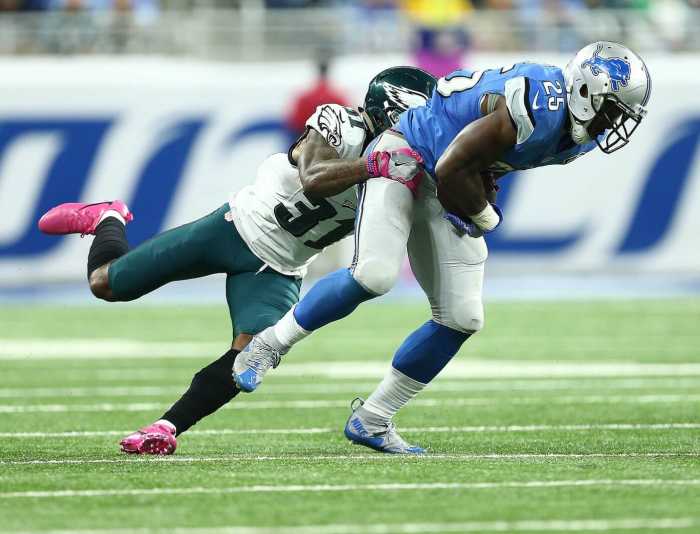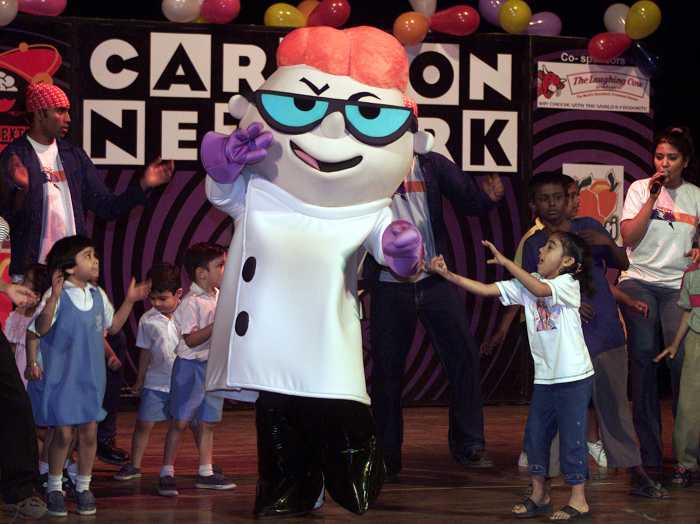We’re almost done the month of July and football is just around the corner. Pinch me. For the rest of the summer we will continue to analyse the Eagles’ NFC East opponents with true top and bottom line projections. The hope is that our position-by-position analysis will help make your own educated decisions on your “buddy’s” favourite team. Today we’re continuing with the offence of perhaps our most perplexing opponent, the Washington Redskins. This article will be focuses on the running back corps in the nation’s capital. Let’s get started.
Running Back
The Redskins will be looking to bounce back from a dreadful season running the ball and are putting all their chips into another young running back’s basket for another consecutive season. To Washington’s credit, they faced an inordinate amount of injuries along their offensive line and had the 3rd hardest schedule for running backs in 2017, according to Fantasy Pros. They finished the season as the 28th ranked rush offence, ending the season 29th in yards per carry. They were 28th in first downs on the ground, 30th in 1st down percentage and 21st in rushing touchdowns.
Perhaps the most damning numbers were the 10 fumbles (29th) and the last place finish in runs over 20 yards. The Redskins 3 carries of 20 yards or more is the worst tally since the 2010 Bengals – it’s that bad. The team also ranked 24th in rushing attempts, which may help put it all in perspective. The Redskins’ two biggest games rushing the ball last season came against the 28th ranked rush defense (LAR) and a New Orleans team that was 28th in yards allowed per carry. They ran for 229 yards and 156 yards in those two games, respectively. If we take those two games away, Washington’s rushing yards per game drops from 90.5 to a disturbingly low 75.9. They ran for over 100 yards in only 5 games last season and averaged over 4 yards a carry in only four games. Nevertheless, the biggest issue with the Redskins rushing attack is the unwillingness to try.
| Run >25 times | ATT | Yards | Touchdowns | Yards/ Carry | Rush 1st Downs |
| @ LAR (W) | 39 | 229 | 2 | 5.9 | 8 |
| vs OAK (W) | 34 | 116 | 0 | 3.4 | 4 |
| @ KC (L) | 26 | 111 | 0 | 4.3 | 4 |
| vs SF (W) | 33 | 94 | 1 | 2.8 | 6 |
| vs MIN (L) | 27 | 81 | 2 | 3.0 | 7 |
| @ NO (L) | 33 | 156 | 1 | 4.7 | 6 |
| vs NYG (W) | 31 | 122 | 0 | 3.9 | 5 |
| vs DEN (W) | 29 | 87 | 0 | 3.0 | 7 |
Washington actually fared pretty well in games where they ran the ball more than 25 times. When the yards or yards per carry don’t jump out at you, the first downs do. The fact of the matter is, whether you’re good at running the ball or not, it’s necessary to keep the defense honest. Take the 2017 Indianapolis team, for example. Despite an obvious dearth of talent in the backfield and along the offensive line, they were 10th in rush attempts and 22nd in rushing yards. My point being, if the Redskins wanted to run the ball, they could. Especially with the success they had with play-action passes, as I mentioned in the last article, the stream of draft picks invested in running backs, and the talent along the offensive line, a lack of desire to run the ball is somewhat confounding.
Yet still, the team hasn’t had a consistent performer out of the backfield since the halcyon days of young Alfred Morris. Hellbent on being a power running team, the ‘Skins have cycled a rotating door of big backs hoping that one of them provides the spark to ignite the flame. After having success with the slashing running style of Morris – a late round surprise that burst onto the scene with one of the best rookie seasons in recent memory – the coaching staff have done whatever they can to ignore the fact that they weren’t built to drive the ball down opponents’ midsections with middle of the pack talent. Below is the list of runners they have deployed over the past 4 seasons, you’ll notice the theme: mid to late round picks with big bodies that sacrifice speed for girth. For all intents and purposes Matt Jones, Rob Kelley and Samaje Perine are the same player. In 2018 it finally looks as if the front office was willing to break out of its shell and spend an early draft pick on a plus athlete at the position. Before we discuss 2018 2nd round pick Derrius Guice’s ability to succeed in this offence, let’s first look at the offence itself.
| Height | Weight | 40 yard dash | Round Drafted | |
| Derrius Guice | 5’11” | 224 | 4.49 | 2 |
| Samaje Perine | 5’10” | 236 | 4.65 | 4 |
| Rob Kelley | 6’0” | 233 | 4.68 | UDFA |
| Alfred Morris | 5’9” | 219 | 4.67 | 6 |
Head Coach Jay Gruden runs a pass-happy west coast style offence and while some analysts point to his track record with running the ball, in reality it hasn’t been very good. The last time the Redskins ranked in the top 10 in terms of running the ball was 2013, the year before Gruden arrived in Washington. At that time Mike Shanahan, who does have a great run offence resume, was in charge of the offence. As you’ll see below, whether as an Offensive Coordinator, or as a Head Coach, Jay Gruden’s offence has never placed in the top half of the NFL in rushing yards. In a pass first offence, yards per carry is perhaps more indicative of the offences ability to run the ball effectively. There have been only 2 seasons that his offence finished above the 2017 league average in yards per carry.
| Gruden | Yards | NFL Rank | Yards/Carry | Touchdowns | Top Running Back | Yards (%) |
| 2017 | 1,448 | 28 | 3.6 | 10 | Samaje Perine | 603 (42%) |
| 2016 | 1,696 | 21 | 4.5 | 17 | Rob Kelley | 704 (42%) |
| 2015 | 1,566 | 20 | 3.7 | 9 | Alfred Morris | 751 (48%) |
| 2014 | 1,691 | 19 | 4.2 | 15 | Alfred Morris | 1074 (64%) |
| 2013* | 1,755 | 18 | 3.6 | 14 | Benjarvus Green-Ellis | 756 (43%) |
| 2012* | 1,745 | 18 | 4.1 | 11 | Benjarvus Green-Ellis | 1094 (63%) |
| 2011* | 1,778 | 19 | 3.9 | 10 | Cedric Benson | 1067 (60%) |
| 2017 NFL Avg | 1,755 | – | 4.1 | 12 | – | – |
* With Bengals as Offensive Coordinator
Fans of Jay will point to the lack of talent he has had in the backfield, when the reality is that he has had a 1,000-yard rusher on the team for five of his last seven seasons, and that didn’t seem to make a difference. Noted by the percentage of yards, Gruden has deployed a rotation of runners throughout his career whether by choice or by injury. For comparison, in 2017 Kareem Hunt had 69.7% of the Chiefs’ rushing yards, Todd Gurley accounted for 66.8% of the Rams’ rushing yards and Le’Veon Bell amassed 77.4% of the Steelers total yards on the ground. While Gurley and Bell have been the established starters in their offences for years, a lot of Hunt’s success was due to Kansas City’s faith in him as a rookie. The Redskins front office has had a short patience with their running backs after Morris hot start to his career and will expect Guice to come out of the gate swinging. All of this does not bode well for him being a top NFL rusher in his rookie season. Despite the odds being stacked against him, I truly believe Guice will be an impact player early on in the 2018 season.
Football fans first heard about Derrius Guice in 2016, when he played second fiddle to Jacksonville RB Leonard Fournette at LSU. Because of nagging injuries to Fournette, Guice was able to carve out a significant role for himself despite coming off the bench. Known for his vicious, punishing running style, he quickly became a fan favourite in Baton Rouge. Coming from a difficult upbringing, it seems that Guice takes out his pent-up frustrations on every hit. He finished his 2016 season with a ridiculous 7.6 yards per carry and 15 touchdowns. His performance caused many people to believe he was the better prospect out of the two LSU runners. As the lead horse in 2017, Guice dealt with his own injury trouble and saw his numbers drop off. For whatever reason, he did not look like the same explosive home-run hitter he did the season prior. A debate as to whether it could be fully blamed on injury, or if Guice was showing his true colors began among draft scouts. While there are some negative traits that manifested in his second season, I blame the loss of speed and explosion on the injuries. Moreover, Guice’s second season really only looks bad in relation to his first – the fact is he still finished with 5.3 yards a carry and 11 touchdowns. If injury concerns continue to plague his promising career, he has given us an impressive indication of his proverbial floor.
| Guice | Rush Att | Yards | Yds/Att | Rush TD | Receptions | Rec Yards | Rec TDs |
| 2016 | 183 | 1,387 | 7.6 | 15 | 9 | 106 | 1 |
| 2017 | 237 | 1,251 | 5.3 | 11 | 18 | 124 | 2 |
As an NFL rusher, Guice is often compared to Marshawn Lynch; other comparisons include Frank Gore and his former teammate Fournette. He is a power back with great balance and a deadly stiff arm. He’s not overly quick but has a fantastic top gear (evidenced by his 4.49 second 40-yard dash) and better-than-average footwork for a man of his size. What gets scouts the giddiest about Guice is his vision. He recognizes pressure, has the ability to make quick cuts and is very talented at exploiting cut back lanes and will often bounce runs to the outside for big gains. His greatest strength may also be his biggest hindrance as well, as he can be indecisive and will not always take what is given – think Jay Ajayi Eagles fans.
The physical runner will often seek out contact when unnecessary, resulting in him taking a ton of hits and perhaps has something to do with his luck with injuries. Interestingly enough, despite being a rough-and-tumble runner, Guice is better on the edges than straight up the middle. This actually fits perfectly into the Washington run scheme, as we will see when we examine the offensive line. The biggest concern with Guice as an NFL rusher are his tight hips. He isn’t always able to cut up-field in an instant, which causes him to wastefully extend runs to the sideline. Scouts mention that his footwork is a product of technique and is not necessarily a natural ability for Guice, which may indicate a ceiling in his development. In addition, some are concerned with his ability to beat linebackers with speed. In the video below, the run at 2:04 is a great example of his shortcomings. He sees the hole but does not have the requisite burst to beat the linebacker to the outside, or the hip flexibility to cut inside his guard.
Pegged as a first-round talent, Guice saw his stock fall to the second round due to what many people assumed was an attitude problem. Despite countless reports vouching for the young RB, it seems as if the hearsay cost him in the long run. I think that because his running style is often compared to Marshawn Lynch, many people believe his personality will follow suit. In reality, Guice is more of an Odell Beckham Jr. than a Lynch. Washington fans have already accepted the rookie with open arms, but it will be interesting to see how he reacts if things go south. In Louisiana, Guice was lucky enough to run behind the 4th ranked rushing O-line according to Football Outsiders. In Washington, he will be running behind a line that ranked 21st in adjusted line yards. Will we see flashes of immaturity if the Redskins struggle out of the gate?
As a pass catcher Guice wasn’t asked to do much at LSU and probably won’t be asked to do much in Washington either. He has consistent hands but is not a talented route runner. He may get better with some coaching, as Fournette did in his first season in the NFL. Guice is not known for his abilities as a pass blocker either. Instead, Washington will turn to scat back extraordinaire Chris Thompson on third downs.
Thompson was on his way to a 1,000-yard all-purpose season before suffering a broken fibula against the Saints in week 11 of last season. He has never been much of a ball carrier but has begun to blossom as one of the league’s premier receivers out of the backfield. In 2017 he averaged 13.1 yards per reception and is always a risk to make a big play. The video below shows him taking a simple hitch route to the house against the Raiders.
https://gfycat.com/gifs/detail/InbornMemorableArchaeocete
Had he not been injured he was on pace for 470 yards rushing on 102 carries with 3 touchdowns and 816 yards receiving on 62 receptions for 6 touchdowns in 2017.
| CT | Games | Rush Attempts | Rush Yards | Yards/ Rush | Rush TD | Receptions | Targets (Catch %) | Receiving Yards | Receiving TD |
| 2015 | 13 | 35 | 216 | 6.2 | 0 | 35 | 48 (73%) | 240 | 2 |
| 2016 | 16 | 68 | 356 | 5.2 | 3 | 49 | 62 (79%) | 349 | 2 |
| 2015 | 10 | 64 | 294 | 4.6 | 2 | 39 | 54 (72%) | 510 | 4 |
Since his entry into the league, Thompson has been trending upwards. He is not expected to be held back from his injury in 2018. However, he did have some injury concerns in college at FSU, so there is some reasonable worry he will take some time to hit his stride. At 5’8” 191 lbs, he does have limitations as a pass blocker, but has greatly improved in his last 2 seasons. He is a highly intelligent player and is surprisingly adept at breaking tackles despite his diminutive stature. He doesn’t take big hits and is patient waiting for his blocks to develop as you may have noticed in the video above. In addition, his ability to cut on a dime allows him to set up his blocks in order to leverage the defenders away from space.
https://gfycat.com/gifs/detail/LittleAllGavial
Thompson’s growth should continue in 2018, especially with the change at quarterback. Throughout his career, Alex Smith has been masterful at getting his running backs involved in the passing game. In each of the last 4 seasons, his RBs have amassed at least 600 yards receiving.
| 1st RB | Receptions | Yards | Touchdowns | 2nd RB | Receptions | Yards | Touchdowns | |
| 2017 | K. Hunt | 53 | 455 | 3 | C. West | 27 | 150 | 2 |
| 2016 | S. Ware | 33 | 447 | 2 | C. West | 28 | 188 | 2 |
| 2015 | J. Charles | 21 | 177 | 1 | C. West | 20 | 214 | 1 |
| 2014 | J. Charles | 40 | 291 | 5 | D. Thomas | 23 | 156 | 0 |
Washington’s schedule also favors Thompson. The Redskins only play 3 teams that ranked in the top ten in terms of stopping receivers out of the backfield: Houston (4th), Philadelphia (9th) and Jacksonville (10th). Conversely, they face Dallas (28th) twice, Atlanta (29th) and Tennessee (32nd) and a long list of middle-of-the-pack teams. Washington will run into problems if Thompson is asked to do too much, but Gruden has been vocal about not putting too much on his plate. The addition of Guice will help take some of the burden off his shoulders. In the run game, Thompson is only effective as a change of pace back. His biggest game on the ground in 2017 came against the LA Rams in which he ran 3 times for 77 yards and two scores. He has only once been handed the ball more than 10 times in a game and that was against San Francisco. He finished with 16 carries and 33 yards.
If Guice struggles from the outset, Washington has two options left on their roster: 2017 rookie Samaje Perine, and 2016 UDFA Rob Kelley. Perine’s first season was one of the reasons the Redskins went out and drafted Guice. While the aforementioned lack of patience with young running backs that has been rampant in the Washington front office definitely played its role, Perine’s skill set does not match today’s NFL. He is a big, bruising runner that is best when plowing ahead in a straight line. On the carries he got last season, he looked slow and failed to do much of anything in the open field. That being said, he was the first Redskins running back to have two consecutive 100-yard games since 2013. He was also the only player on the roster to crack 100-yards rushing in a game all season. He could still be a good option for the team on short yardage situations but is in danger of losing his role to a returning Rob Kelley.
Kelley is very similar to Perine in ability but is a better athlete. He lacks vision and patience and won’t make splash plays but will fight for difficult yards. In my opinion, Kelley is a victim of circumstance. He was held back last season by ankle and knee injuries and has lost weight in the off-season in an attempt to become a more explosive rusher. Apparently, he has also been working on his pass catching. In 2016, his one healthy season, Kelley only had more than 20 carries in 3 games, and one of them resulted in 100-yards rushing. During that season he ran for a positive gain on 84% of his runs and had the 12th most broken tackles despite only starting 9 games. This summer, in OTAs he took first team reps over Guice, but I imagine that will not be the case come September. However, he may be the most complete RB on the roster and could see playing time because of it – at least until Guice improves his pass blocking and route running. He also is a safer bet than home-run Guice, and the coaching staff may favour guaranteed yards over the promise of splash plays.
Best Case: This team’s rushing attack will go as far as the young rookie can take it. Barring injury, the offensive line looks to be much improved from last season and will play a big role in jump-starting the run game. Guice will undoubtedly be better at the second level than the rest of the group, which should allow for some excitement. Many teams will underestimate the raw talent this offence has, which will cause them to take defenses by surprise. With a healthy stable of running backs, Gruden ups the carries and sees a rise in production. Simply due to scheme, I can’t see this team finishing in the top 5 in rush yards, but in this scenario, they finish top 5 in yards per carry and top 15 in yards. Chris Thompson continues to dominate and takes my fantasy team to the finals, because I will be drafting him early. With rested legs, the combination of Rob Kelley and Samaje Perine allow the Redskins to do what they haven’t been able to do for years – run up the middle.
Worst Case: More of the same from a Jay Gruden led offence. Considering myself a Derrius Guice fan, I worry his best years may be wasted in a stagnant rushing attack that consistently underachieves. Chris Thompson should have a good year, but injuries are always a concern with the smaller, frailer running backs. Perine and Kelley manage to vulture some touchdowns but are otherwise non-factors. The team averages less than 4 yards a carry yet again and refuses to run more than 25 times a game. If the offensive line stays healthy, the team figures to finish closer to 20th than 30th in terms of total rushing yards. If not, this offence may be a difficult one to watch in 2018.
Mandatory Credit: Geoff Burke-USA TODAY Sports

